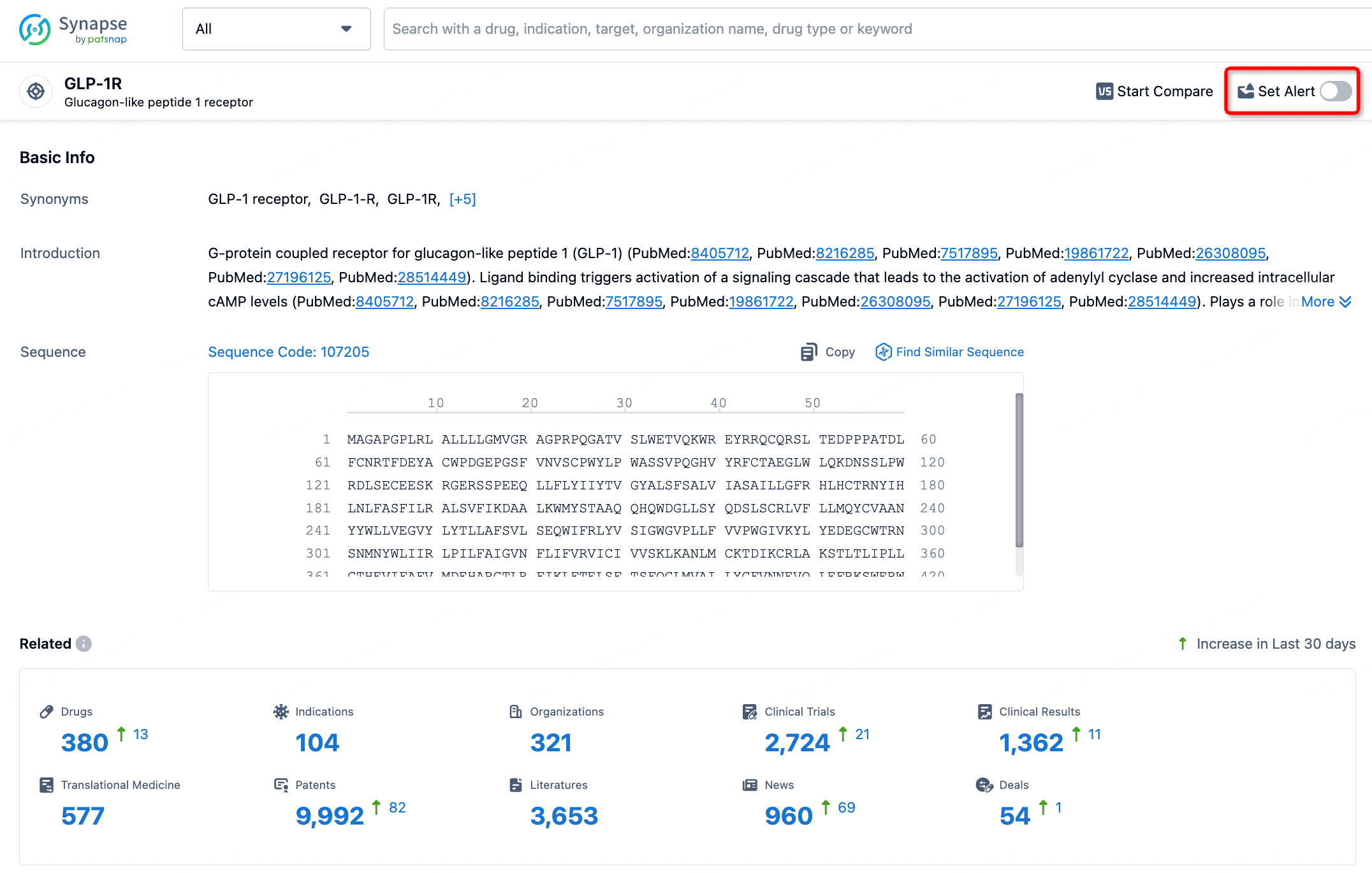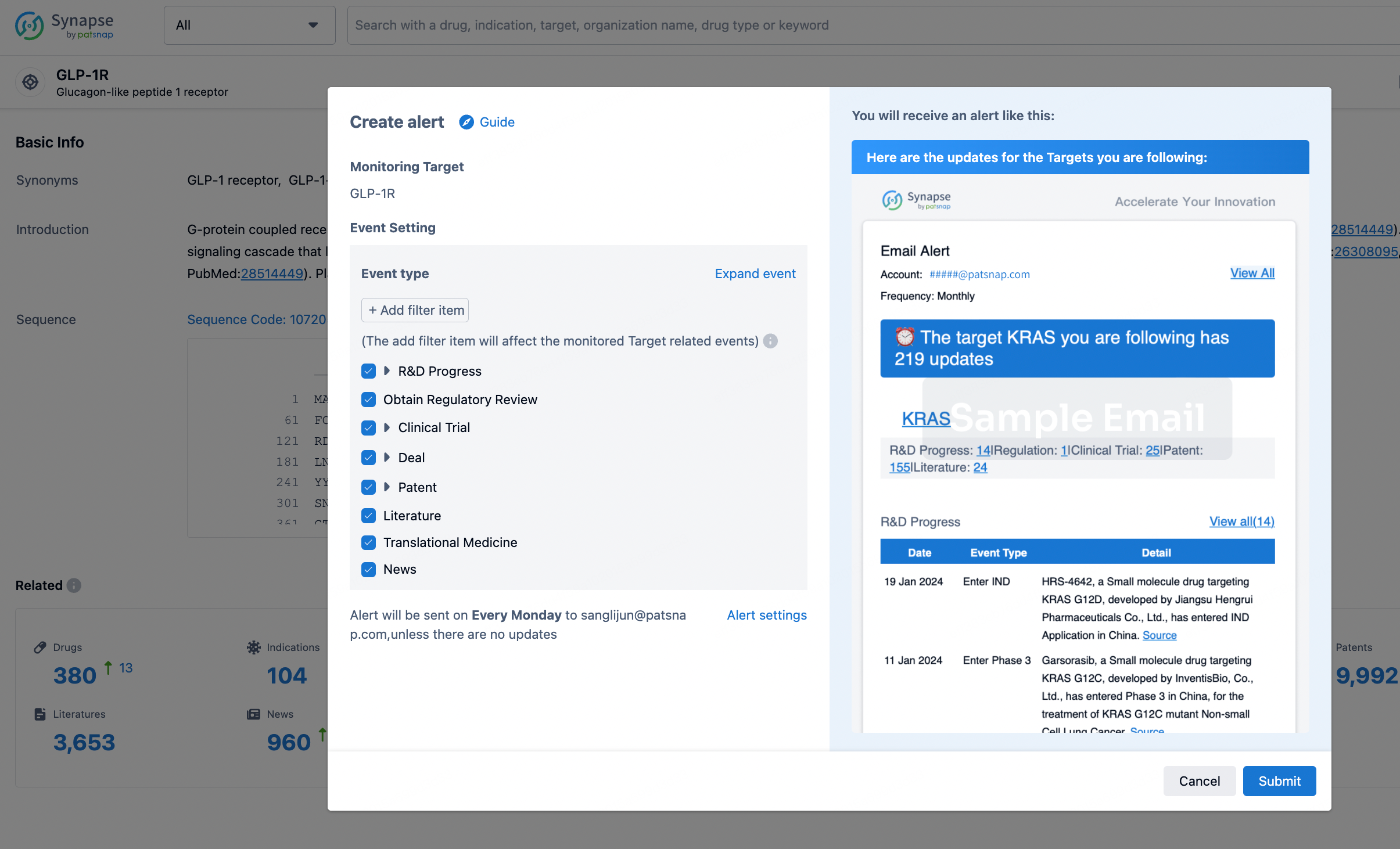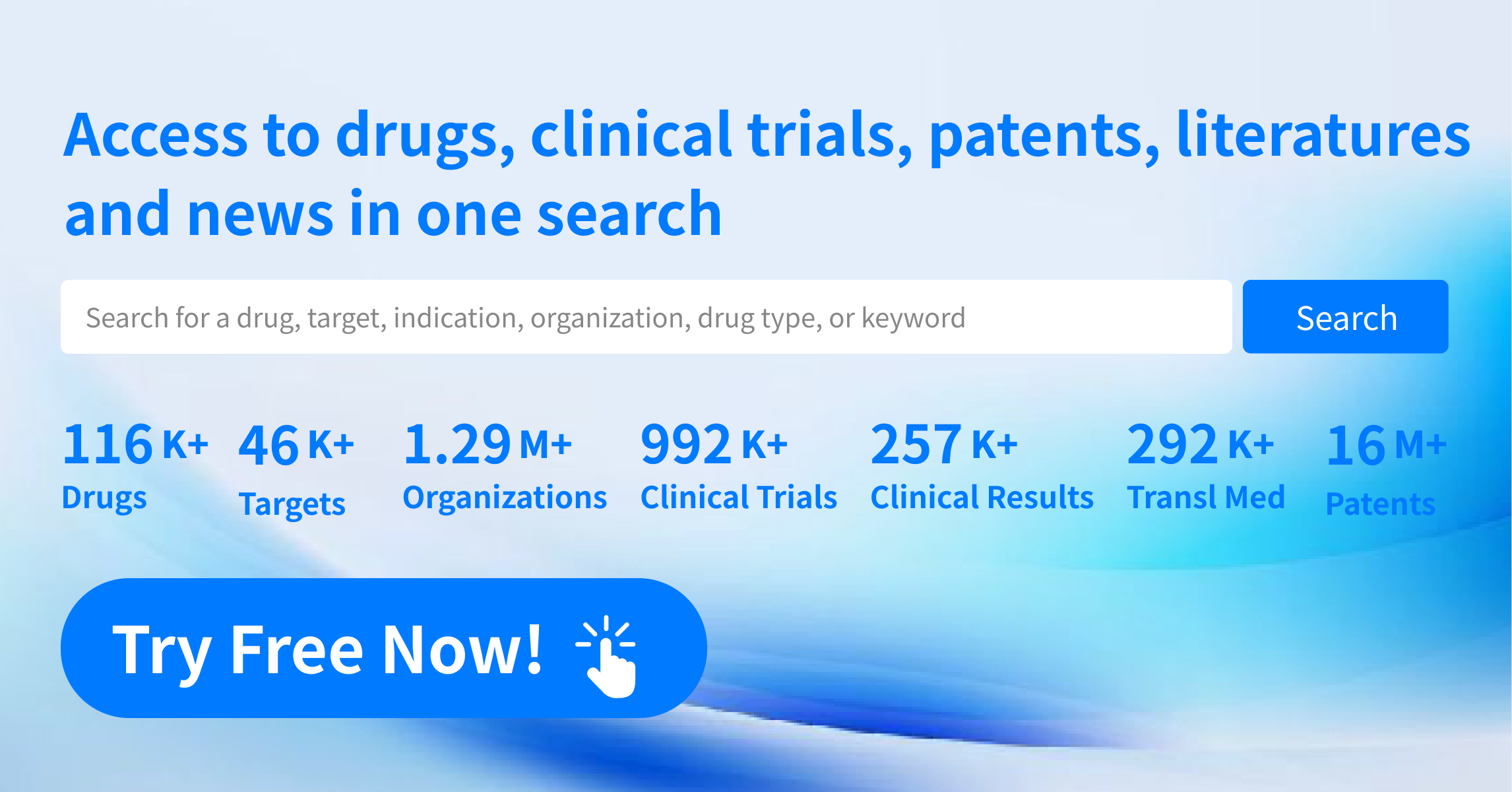Request Demo
What are AGRN stimulators and how do they work?
25 June 2024
In the rapidly evolving world of biomedical research, the quest for innovative therapies and treatments often leads scientists to explore the vital roles that various proteins and molecules play in the human body. One such intriguing focus area is the study and application of AGRN stimulators. These compounds hold significant promise in therapeutic interventions for a variety of medical conditions. This blog post aims to provide a comprehensive overview of AGRN stimulators, how they function, and their potential applications in medicine.
AGRN, short for Agrin, is a protein essential in the formation and maintenance of the neuromuscular junction (NMJ), the critical synapse between nerve cells and muscle cells. The NMJ is where motor neurons transmit signals to muscle fibers, prompting them to contract. Agrin plays a pivotal role in this process by clustering acetylcholine receptors (AChRs) on the muscle cell surface, thereby facilitating efficient signal transmission. AGRN stimulators are compounds designed to enhance or mimic the activity of Agrin, thereby improving NMJ function and potentially ameliorating conditions associated with NMJ dysfunction.
AGRN stimulators work by interacting with key molecular pathways involved in the formation and maintenance of the NMJ. One of the principal mechanisms of action is the enhancement of Agrin's ability to cluster AChRs. Agrin binds to a specific receptor on the muscle cell surface called LRP4, which subsequently activates a kinase known as MuSK (Muscle-Specific Kinase). MuSK then initiates a cascade of intracellular events that result in the clustering of AChRs at the NMJ.
By stimulating this pathway, AGRN stimulators can enhance the stability and function of the NMJ. This is particularly important in conditions where NMJ function is compromised, such as in certain neuromuscular diseases. Additionally, AGRN stimulators might influence other pathways that involve Agrin, including those related to synapse formation and maintenance in the central nervous system, although this area of research is still in its early stages.
The potential applications of AGRN stimulators span a wide range of medical conditions. One of the most promising areas is in the treatment of neuromuscular diseases, such as Myasthenia Gravis (MG) and Amyotrophic Lateral Sclerosis (ALS). MG is an autoimmune disorder characterized by the production of antibodies that block or destroy AChRs, leading to muscle weakness and fatigue. By enhancing AChR clustering, AGRN stimulators could help to counteract the effects of these antibodies and improve muscle function in MG patients.
Similarly, in ALS, a neurodegenerative disease that affects motor neurons, the degradation of NMJs is a significant factor contributing to muscle weakness and paralysis. AGRN stimulators could potentially help to preserve NMJ integrity and slow the progression of muscle degeneration in ALS patients. While research in this area is ongoing, early studies have shown promising results, and clinical trials are eagerly anticipated.
Beyond neuromuscular diseases, AGRN stimulators may have applications in regenerative medicine. For instance, they could be used to enhance muscle regeneration and repair after injury or surgery. By promoting the formation of functional NMJs, AGRN stimulators could aid in the recovery of muscle strength and function, thereby improving patient outcomes.
Moreover, AGRN stimulators might also have a role in age-related muscle decline, known as sarcopenia. As people age, the efficiency of NMJ signaling tends to diminish, leading to reduced muscle mass and strength. By enhancing NMJ function, AGRN stimulators could potentially mitigate some of the effects of sarcopenia and improve the quality of life for older adults.
In conclusion, AGRN stimulators represent a promising avenue for therapeutic development in a variety of medical fields. By enhancing the function and stability of the neuromuscular junction, these compounds have the potential to improve outcomes in neuromuscular diseases, aid in muscle regeneration, and combat age-related muscle decline. As research continues to advance, the full therapeutic potential of AGRN stimulators will likely become increasingly apparent, offering new hope for patients affected by these challenging conditions.
AGRN, short for Agrin, is a protein essential in the formation and maintenance of the neuromuscular junction (NMJ), the critical synapse between nerve cells and muscle cells. The NMJ is where motor neurons transmit signals to muscle fibers, prompting them to contract. Agrin plays a pivotal role in this process by clustering acetylcholine receptors (AChRs) on the muscle cell surface, thereby facilitating efficient signal transmission. AGRN stimulators are compounds designed to enhance or mimic the activity of Agrin, thereby improving NMJ function and potentially ameliorating conditions associated with NMJ dysfunction.
AGRN stimulators work by interacting with key molecular pathways involved in the formation and maintenance of the NMJ. One of the principal mechanisms of action is the enhancement of Agrin's ability to cluster AChRs. Agrin binds to a specific receptor on the muscle cell surface called LRP4, which subsequently activates a kinase known as MuSK (Muscle-Specific Kinase). MuSK then initiates a cascade of intracellular events that result in the clustering of AChRs at the NMJ.
By stimulating this pathway, AGRN stimulators can enhance the stability and function of the NMJ. This is particularly important in conditions where NMJ function is compromised, such as in certain neuromuscular diseases. Additionally, AGRN stimulators might influence other pathways that involve Agrin, including those related to synapse formation and maintenance in the central nervous system, although this area of research is still in its early stages.
The potential applications of AGRN stimulators span a wide range of medical conditions. One of the most promising areas is in the treatment of neuromuscular diseases, such as Myasthenia Gravis (MG) and Amyotrophic Lateral Sclerosis (ALS). MG is an autoimmune disorder characterized by the production of antibodies that block or destroy AChRs, leading to muscle weakness and fatigue. By enhancing AChR clustering, AGRN stimulators could help to counteract the effects of these antibodies and improve muscle function in MG patients.
Similarly, in ALS, a neurodegenerative disease that affects motor neurons, the degradation of NMJs is a significant factor contributing to muscle weakness and paralysis. AGRN stimulators could potentially help to preserve NMJ integrity and slow the progression of muscle degeneration in ALS patients. While research in this area is ongoing, early studies have shown promising results, and clinical trials are eagerly anticipated.
Beyond neuromuscular diseases, AGRN stimulators may have applications in regenerative medicine. For instance, they could be used to enhance muscle regeneration and repair after injury or surgery. By promoting the formation of functional NMJs, AGRN stimulators could aid in the recovery of muscle strength and function, thereby improving patient outcomes.
Moreover, AGRN stimulators might also have a role in age-related muscle decline, known as sarcopenia. As people age, the efficiency of NMJ signaling tends to diminish, leading to reduced muscle mass and strength. By enhancing NMJ function, AGRN stimulators could potentially mitigate some of the effects of sarcopenia and improve the quality of life for older adults.
In conclusion, AGRN stimulators represent a promising avenue for therapeutic development in a variety of medical fields. By enhancing the function and stability of the neuromuscular junction, these compounds have the potential to improve outcomes in neuromuscular diseases, aid in muscle regeneration, and combat age-related muscle decline. As research continues to advance, the full therapeutic potential of AGRN stimulators will likely become increasingly apparent, offering new hope for patients affected by these challenging conditions.
How to obtain the latest development progress of all targets?
In the Synapse database, you can stay updated on the latest research and development advances of all targets. This service is accessible anytime and anywhere, with updates available daily or weekly. Use the "Set Alert" function to stay informed. Click on the image below to embark on a brand new journey of drug discovery!
AI Agents Built for Biopharma Breakthroughs
Accelerate discovery. Empower decisions. Transform outcomes.
Get started for free today!
Accelerate Strategic R&D decision making with Synapse, PatSnap’s AI-powered Connected Innovation Intelligence Platform Built for Life Sciences Professionals.
Start your data trial now!
Synapse data is also accessible to external entities via APIs or data packages. Empower better decisions with the latest in pharmaceutical intelligence.


